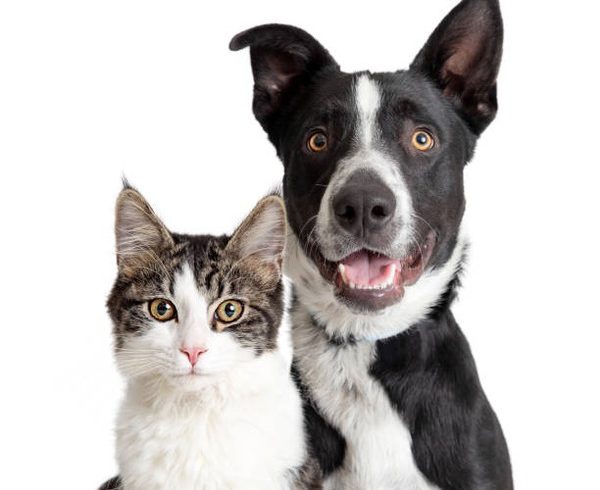Have you ever wondered how medical treatments for our furry friends are made safe and effective? Specifically, let’s talk about iodine treatments in animals – those necessary procedures that help treat various conditions in pets, particularly thyroid issues. With science and compassion hand in hand, laboratories play a vital role in ensuring these treatments are delivered safely. So, grab a comfy seat, and let’s unravel the meticulous processes that labs engage in to protect our beloved animals during iodine treatments.
Ensuring Safety in Iodine Treatments
When it comes to treating animals, we all want to be sure that they’re receiving care that’s not only effective but also safe. Iodine treatments, especially when dealing with thyroid conditions, are a prime example. They need to be handled with the utmost precision, and that’s where labs come into the picture. Let’s dive into the specifics of how labs are enhancing the safety of these treatments.
Conducting Detailed Assessments
First things first, before any treatment is administered, a thorough assessment is a must. Labs carry out a variety of diagnostic tests to assess the health status of the animal and determine the necessity and appropriateness of iodine treatment. This might include:
Blood tests: To check the thyroid hormone levels and other indicators of general health.
Imaging: Like ultrasounds or scans to visualize the thyroid gland’s condition.
Dosage calculations: Precisely measuring the right amount of iodine needed.
These assessments are crucial to tailor the treatment to the individual needs of each animal, minimizing risks and potential side effects.
Utilizing State-of-the-Art Equipment
Labs aren’t just about white coats and test tubes. They’re equipped with cutting-edge technology that ensures treatments are administered accurately. Sophisticated machinery for imaging and dosing provides precision in treatment planning and delivery, which is key for safety.
Adhering to Strict Protocols
In the world of veterinary care, protocols are the bread and butter of safety. Labs follow rigorous standards and procedures to ensure every step of the iodine treatment process is performed correctly. This might include:
Aseptic techniques: Keeping the equipment and environment sterile to prevent infections.
Monitoring: Continuous observation during and after treatment to catch any adverse reactions early on.
Follow-up: Scheduling post-treatment check-ups to assess the recovery and effectiveness of the iodine therapy.
These steps are essential for maintaining the integrity of the treatment and the well-being of the animals.
What Happens Inside the Lab
Let’s take a sneak peek behind lab doors. It’s not all mysterious; it’s about precision, care, and expertise. Vet technicians and specialists work meticulously to ensure each iodine dose is calculated and administered correctly. Let’s break it down a bit more:
Customizing Iodine Dosages
Each animal is unique, and so is their treatment plan. Labs assess various factors like weight, age, and the severity of the condition to customize the iodine dosage. It’s a delicate balance that needs to be struck, and labs are adept at finding that sweet spot with their know-how and technology.
Ensuring Quality Control
Quality is king in a lab setting. Every medication, including the iodine used for treatments, undergoes stringent checks for potency and purity. It’s all about minimizing risks and ensuring that only the best-quality treatments are given to our animal companions.
Training and Expertise
The professionals behind the scenes are true experts in their field. They undergo extensive training to handle these treatments with the care and precision they demand. Their expertise is what makes this whole process tick like a well-oiled machine.
Post-Treatment Care and Monitoring
Our job isn’t done once the treatment is administered. Far from it. Post-treatment care is where labs show their commitment to the full scope of animal welfare:
Tracking Recovery Progress
Monitoring the animal’s recovery after an iodine treatment is essential for spotting any complications early on. Labs keep a close eye on the progress and can adjust care plans when necessary.
Communicating with Veterinary Clinics
Labs don’t operate in isolation. They work hand-in-hand with veterinary clinics to ensure continuity of care. They share detailed reports and insights that help vets make informed decisions for ongoing treatment or adjustments.
Deploying Follow-Up Measures
Finally, follow-ups are arranged to verify the success of the treatment and the health status of the pet. Labs collaborate with veterinary professionals to schedule these crucial check-ups, reinforcing the safety net around iodine treatments.
Supporting Hyperthyroid Pet Care
Hyperthyroidism in cats is one condition where iodine treatments come into play. Proper hyperthyroid cat care requires a precise approach, which labs facilitate through their careful preparations and oversight. It’s a testament to how labs prioritize not just the treatment itself but the ongoing health and happiness of our feline friends.
Vet Labs in Local Communities
Labs aren’t just faceless entities; they’re an integral part of our local communities. For example, a vet lab in Springfield, VA, represents a critical resource for pet owners and veterinarians. These local labs provide accessible, high-quality medical care that caters to the specific needs of the community’s animal population.
Fostering Trust Through Excellence
In a nutshell, the meticulous work of veterinary labs instills confidence in the treatments our animals receive. By consistently delivering on safety measures, labs ensure that iodine treatments are as safe as can be. This unwavering commitment to excellence is what helps us trust in the veterinary care system and know that our animal companions are in good hands.
Here’s the essence of what we’ve covered:
Labs play a critical role in enhancing the safety of iodine treatments for animals.
Detailed assessments, state-of-the-art equipment, and strict protocols are integral to the process.
Labs ensure customized dosages and quality control and have professionals with the necessary expertise.
Post-treatment monitoring and collaboration with vets secure the well-being of pets beyond the lab.
Local labs, including specific ones like a vet lab and centers like The Regional Veterinary Referral Center, are crucial for community animal health.
Final Thoughts
As we wrap up, remember that behind every successful iodine treatment is the vigilant work of labs across the globe. Their commitment to safety doesn’t just help our pets at the moment but also paves the way for healthier, happier lives in the long term. So, the next time you hear about a pet getting an iodine treatment, rest assured that there’s a network of professionals and protocols working tirelessly to ensure your little buddy’s safety. Now, that’s something we can all feel good about.




